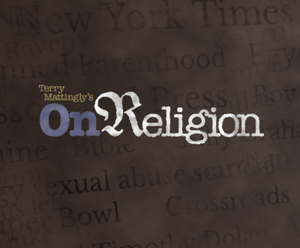
EDITOR’S NOTE: Since I a traveling, there was no new “On Religion” column this week. The following is a flashback to 1998 — the column’s 10th anniversary.
******
Back in the 1980s, I began to experience deja vu while covering event after event on the religion beat in Charlotte, Denver and then at the national level.
I kept seeing a fascinating cast of characters at events centering on faith, politics and morality. A pro-life rally, for example, would feature a Baptist, a Catholic priest, an Orthodox rabbi and a cluster of conservative Methodists, Presbyterians, Episcopalians and Lutherans. Then, the pro-choice counter-rally would feature a “moderate” Baptist, a Catholic activist or two, a Reform rabbi and mainline Methodists, Presbyterians, Episcopalians and Lutherans.
Similar line-ups would appear at many rallies linked to gay rights, sex-education programs and controversies in media, the arts and even science. Along with other journalists, I kept reporting that today’s social issues were creating bizarre coalitions that defied historic and doctrinal boundaries. After several years of writing about “strange bedfellows,” it became obvious that what was once unique was now commonplace.
Then, in 1986, a sociologist of religion had an epiphany while serving as a witness in a church-state case in Mobile, Ala. The question was whether “secular humanism” had evolved into a state-mandated religion, leading to discrimination against traditional “Judeo-Christian” believers. Once more, two seemingly bizarre coalitions faced off in the public square.
“I realized something there in that courtroom. We were witnessing a fundamental realignment in American religious pluralism,” said James Davison Hunter of the University of Virginia. “Divisions that were deeply rooted in our civilization were disappearing, divisions that had for generations caused religious animosity, prejudice and even warfare. It was mind- blowing. The ground was moving.”
The old dividing lines centered on issues such as the person of Jesus Christ, church tradition and the Protestant Reformation. But these new interfaith coalitions were fighting about something even more basic – the nature of truth and moral authority.
Two years later, Hunter began writing “Culture Wars: The Struggle to Define America,” in which he declared that America now contains two basic world views, which he called “orthodox” and “progressive.” The orthodox believe it’s possible to follow transcendent, revealed truths. Progressives disagree and put their trust in personal experience, even if that requires them to “resymbolize historic faiths according to the prevailing assumptions of contemporary life.”
That’s what I was seeing at all of those rallies and marches. And that’s why, whenever I covered separate meetings of Catholics, Jews, Baptists, Episcopalians or whatever, I almost always found two distinct camps of people fighting about the same subjects.
About the same time Hunter began “Culture Wars,” I began writing this column for the Scripps Howard News Service. The column turns 10 years old this week and, almost every week, I have seen evidence that Hunter has found a fault line that runs through virtually every set of pews in contemporary religious life.
Ask any big question and this issue looms in the background. Is the Bible an infallible source of truth? Is papal authority unique? Do women and men have God-given roles in the home and the church? Can centuries of Jewish traditions survive in the modern world? Can marriage be redefined? Is abortion wrong? Can traditionalists proclaim that sex outside of marriage is sin? Are heaven and hell real? Do all religious roads lead to the same end? Is there one God, or many? What is his or her name or names?
Many in the orthodox camp disagree on some of the answers, but they are united in their belief that public life must include room for those who insist eternal answers exist. Meanwhile, progressives are finding it harder to tolerate the views of people they consider offensive and intolerant. This is not a clash between religious people and secular people, stressed Hunter. This is a battle between two fundamentally different approaches to faith.
“We may soon reach the point when religious conservatives will long for the time when real, live, secular humanists ran the show,” he said. “At least those people believed in something specific. At least they believed in reason and universal principles.”
Today, secularism just doesn’t sell in the marketplace. This approach to life has been tried and found wanting. People hunger for spirituality, miracles and a sense of mystery. But the core question remains: Should believers defend eternal truths or follow their hearts?
“The momentum is toward experience and emotions and feelings,” said Hunter. “People are saying, ‘I feel, therefore I am.’ This is how more and more people are deciding what is real and right and true.”










